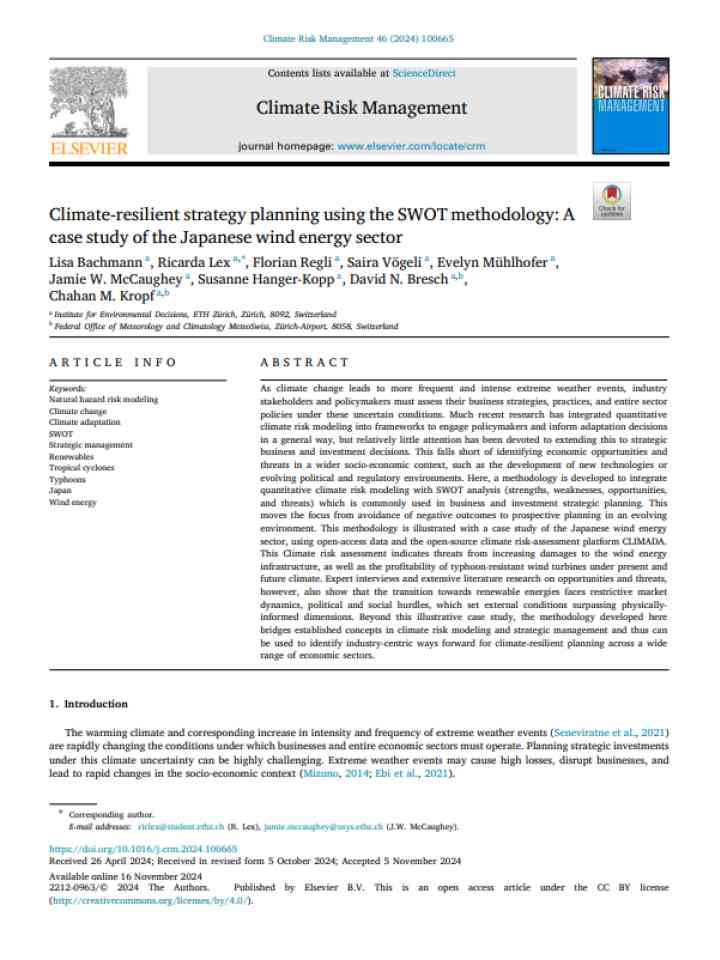Climate-resilient strategy planning using the SWOT methodology: A case study of the Japanese wind energy sector
This study develops a methodology that integrates quantitative climate risk modeling with SWOT analysis (strengths, weaknesses, opportunities, and threats), which is commonly used in business and investment strategic planning. The methodology is illustrated with a case study of the Japanese wind energy sector, using open-access data and the open-source climate risk-assessment platform CLIMADA, moving the focus from avoidance of negative outcomes to prospective planning in an evolving environment.
The findings indicate threats from increasing damages to the wind energy infrastructure, as well as the profitability of typhoon-resistant wind turbines under present and future climate. Expert interviews and extensive literature research on opportunities and threats, however, also show that the transition towards renewable energies faces restrictive market dynamics, political and social hurdles, which set external conditions surpassing physically-informed dimensions. Beyond this illustrative case study, the methodology developed here bridges established concepts in climate risk modeling and strategic management and thus can be used to identify industry-centric ways forward for climate-resilient planning across a wide range of economic sectors.
Explore further
